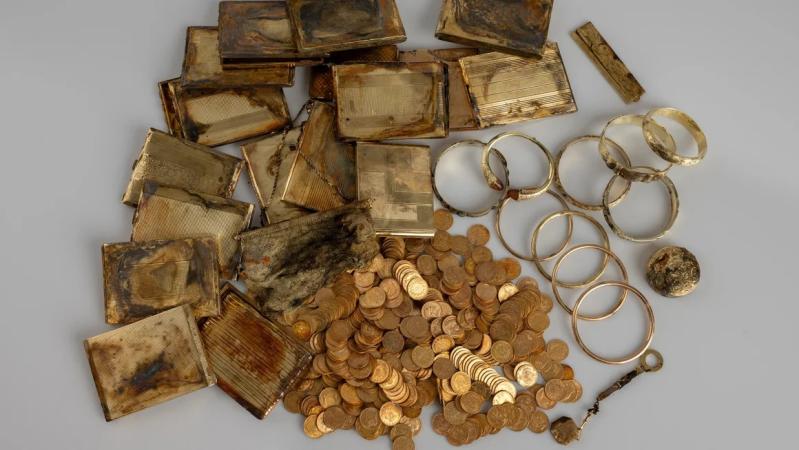Hikers Discover Hidden Gold Treasure in the Czech Republic’s Krkonoše Mountains
Krkonoše Mountains, Czech Republic—Two hikers' remarkable treasure discovery has stunned archaeologists and sparked widespread curiosity. During a forest hike through the scenic Krkonoše Mountains in northeastern Czech Republic, the pair stumbled upon a hidden aluminum box containing an extraordinary cache of gold and valuables.
Gold Treasure Found by Hikers in the Czech Republic
The hikers, who have chosen to remain anonymous, were navigating a shortcut along a mountain trail when they spotted a metallic box protruding from a stone wall. Upon opening it, they discovered a trove that included:
- 598 gold coins
- 10 gold bracelets
- 17 cigar cases
- A gold powder compact
- A fine-toothed comb
Realizing the potential historical significance, they turned the find over to the Museum of Eastern Bohemia in Hradec Králové. Miroslav Novák, head of the museum’s archaeological department, confirmed the discovery and noted that the hikers brought the treasure directly to a numismatist at the museum without prior notice.
Value and Origin of the Czech Treasure
Experts estimate that the gold coins alone weigh 3.7 kilograms (8.16 pounds) and are worth approximately 8 million Czech koruna (about USD 360,000) based on their metal content, according to museum numismatist Vojtěch Brádle. However, their historical value could be significantly higher.
The oldest coin in the hoard is dated 1921, suggesting the stash was buried sometime within the last 100 years. Historians speculate that it may be connected to the pre-World War II exodus of Czech and Jewish residents, or possibly to events in 1945, as Germans were fleeing the area.
Mystery Surrounding the Mountain Gold Stash
Adding to the mystery, none of the coins are local. “Half are of Balkan origin, the other half are French,” Novák noted. The absence of Central European coins, including German or Czech currency, has left experts puzzled. The discovery site is located along a historic ethnic border between the Czech and German populations, possibly explaining the unusual composition.
Local rumors abound, and the museum has been receiving various tips from residents. Theories include:
- The treasure belonged to the Swéerts-Špork family, former aristocratic owners of the Kuks estate.
- It may be war loot from Czechoslovak legionnaires.
- The coins could be part of a stolen collection or hidden by a museum worker or collector during times of unrest.
- Brádle also pointed out that two of the cigar cases remain unopened, and the complete material analysis of the items is still ongoing.
Historical Context and Expert Opinions
Professor Mary Heimann, a modern history expert at Cardiff University, emphasized the historical context surrounding the year 1921. The end of the Soviet-Polish War, an economic downturn, and regional instability may have prompted someone to hide the gold as a form of security.
Heimann expressed doubt about the theory that the treasure was hidden in 1945. “If it were from that time, we’d expect more recent coins,” she said, reinforcing the possibility that the stash was buried in the interwar period or even earlier.
What's Next for the Gold Find?
The Museum of Eastern Bohemia plans to conduct further tests to determine the full value and composition of the stash. A public exhibition is expected in the fall, allowing visitors to see the rare find up close.
Under Czech law, archaeological discoveries automatically become the property of the local regional administration. However, the anonymous hikers are entitled to a financial reward, which will be determined based on the treasure’s appraised value, either as raw metal or for its historical importance.

